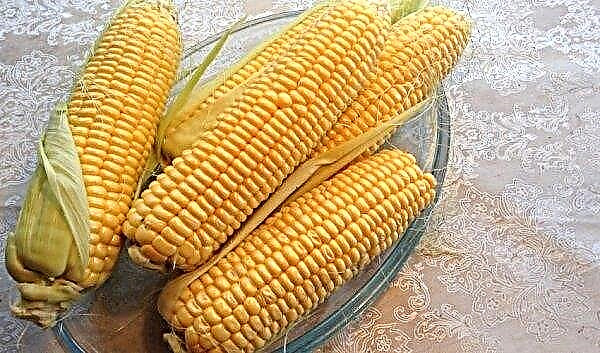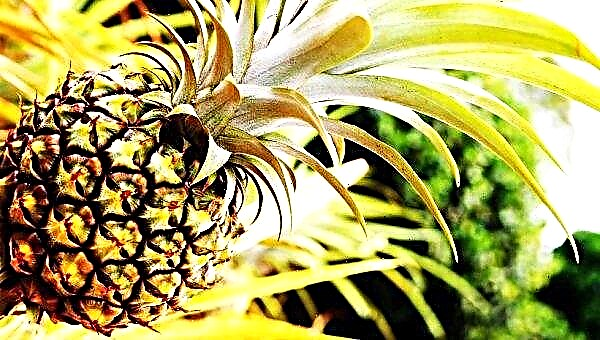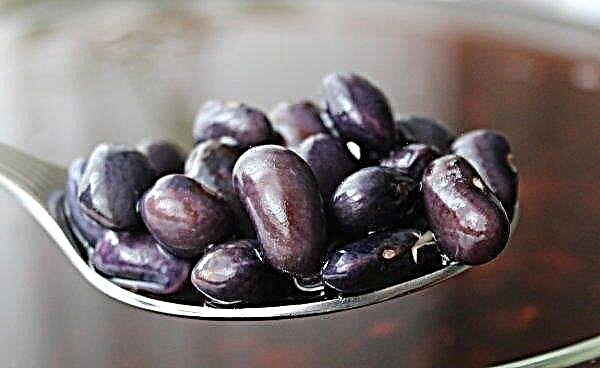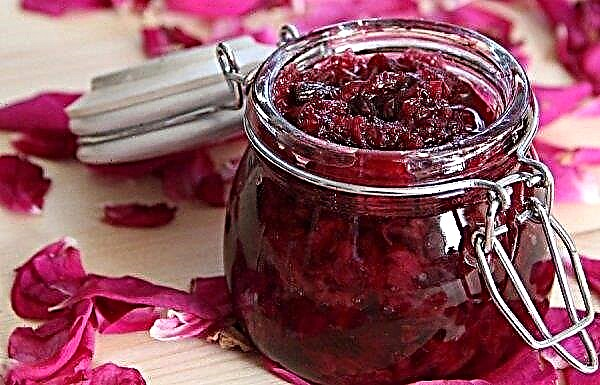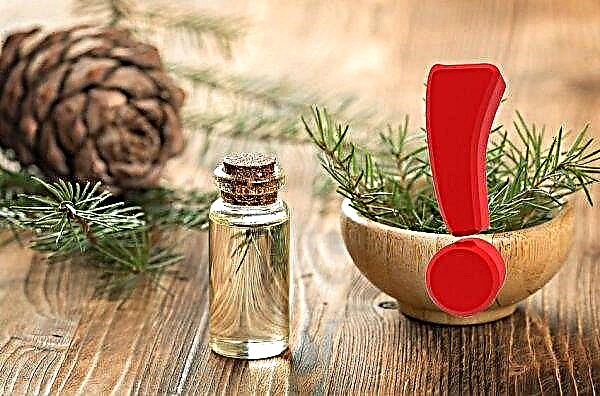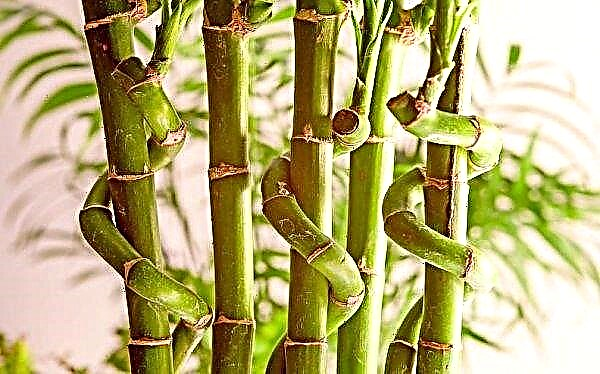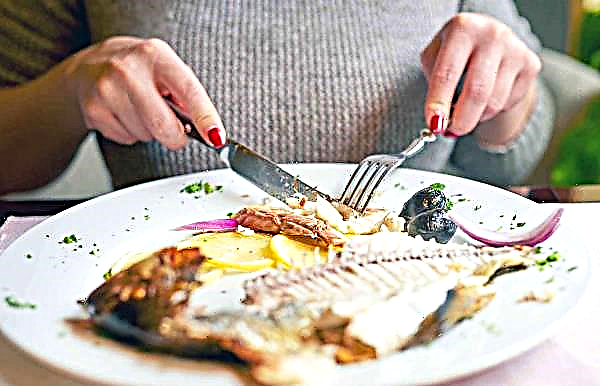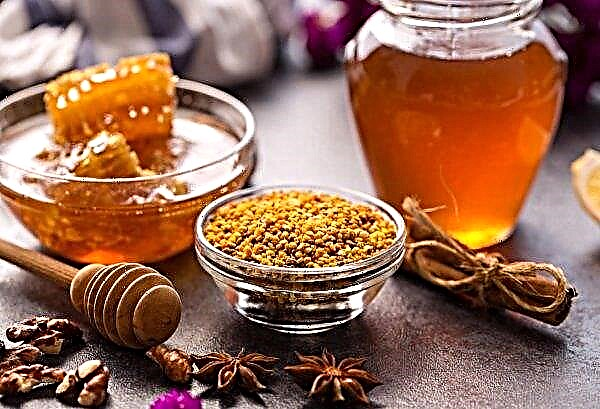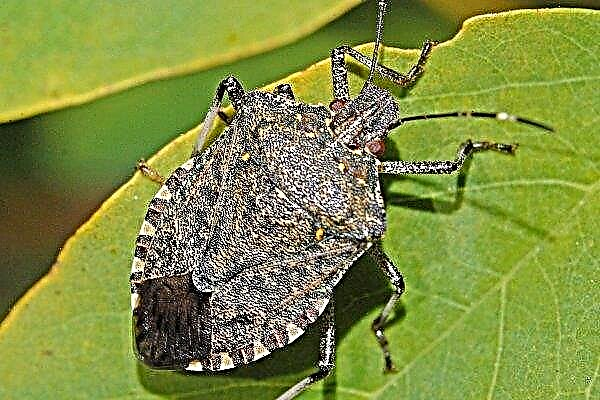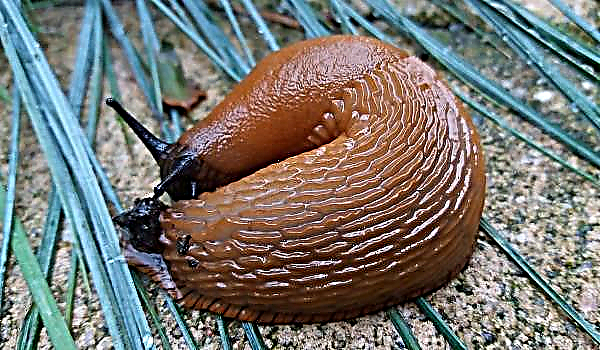In total, there are about 80 types of hydrangeas. Among which are many varieties that have proven themselves and enjoy considerable success with gardeners. For example, Grandiflora or Kiusu. But despite this, breeders do not cease to breed new species. However, whether they are able to compare with already proven varieties - find out from the article.
New varieties of hydrangea and their description
Panicled hydrangea is the most popular species. This is due to both decorative properties and unpretentiousness to care and excellent winter hardiness. Therefore, it is not surprising that the attention of breeders is focused more on this species.
Did you know? The hydrangea of hydrangea is eloquently indicated by its Latin name Hydrangea. This translates as a "vessel of water."
At the time of 2019, the following varieties of panicle hydrangea can be classified as:
- Darts Little Dot - a small bush reaching a maximum of 1 m in height. Notable for its reddish shoots. Inflorescences are rounded and small in size. The flowers are few in number, white, but turn pink over time.

- Another representative of small bushes - Bobo. Grows to 70 cm. Has cone-shaped inflorescences. The flowers are very small, but this is offset by abundant flowering, which occurs relatively early - at the end of June. Their color is originally lemon white, but gradually acquires pinkish tones.

- Grade Diamond rouge stands out for large flowers and beautiful foliage. The size of the inflorescence can reach 30 cm in length. Flowers not only stand out in large sizes, but also change their color several times. At first they are white, gradually turn pink and then turn red.

- For lovers of compact spherical plants suitable Plus habitus. It grows to 1.5 m. In 2011, during the "Plantarium" held in Holland, he received a silver medal.

- Wims red also small, grows to a maximum of 1 m. But then it has large inflorescences, up to 35 cm in length. Flowers also change color over the season, from pinkish tones to wine red. The peculiarity of the variety is a pleasant honey aroma exuded by a bush.

- In France, the variety was widely distributed. Phrase Melba. It grows up to 2 m in height and in diameter. The flowers have a nice white-pink hue. Thanks to its color, the bush got its name in honor of the dessert, in which the main ingredients are strawberries and cream. It is also noteworthy that despite the presence of long and straight branches, they do not require garters.
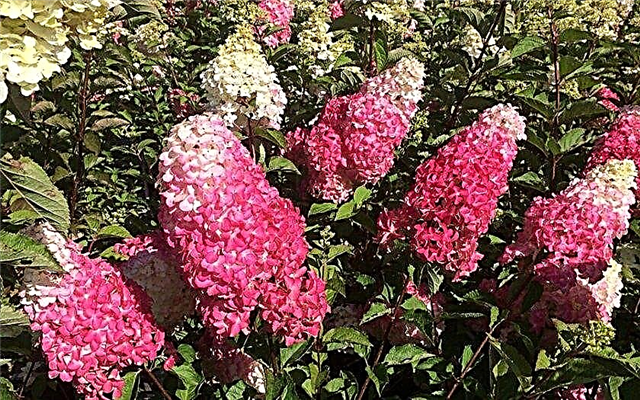
- Magic Fire reaches an average size of 1.2 m. It has inflorescences in the form of cones, up to 15 cm in length. The flowers at the beginning of flowering have a shade of ivory, but by the end of the season they become purple.

- Silver Dollar - This is a bush that is wider than tall. Grows up to 2 m, up to 2.5 m wide. The inflorescences are lush, initially have a white color, but over time they begin to silver.
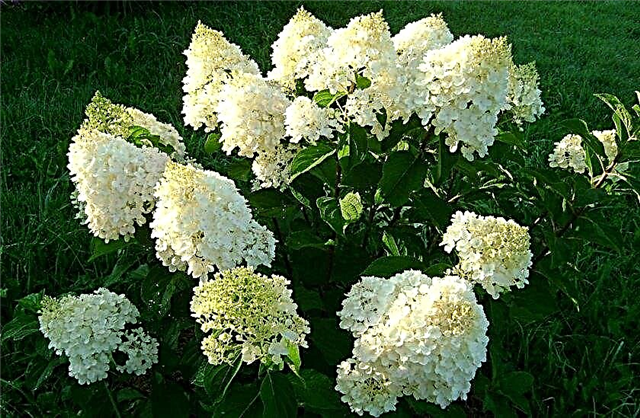
- For lovers of rich purple tones, suitable Pinky winky. The inflorescences are conical, initially white, but as they bloom, they become coral, and then purple-violet.

- Limelight and Little lime - it's almost twin brothers. They are similar in appearance, but Limelight reaches 2 m in height, and his fellow is only 1 m. They have flowers of a white-greenish hue. Little Lime is suitable for container growing.
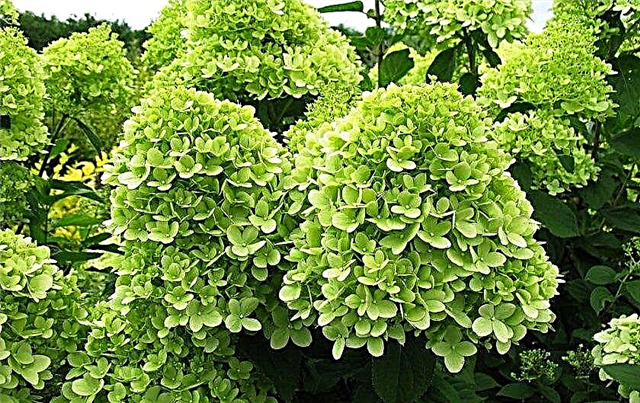
- Vanilla Freyz It is distinguished by its asymmetrical crown, the top of which remains white for a long time when, like the rest of the bush, it turns pink. A very popular novelty in landscape design.
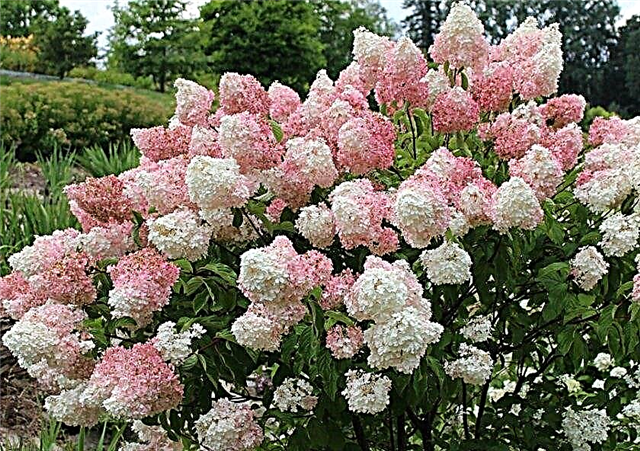
- Sunday Freyz grows to 1.1 m. It got its name in honor of the name strawberry ice cream, since its greenish flowers over time are painted in pinkish-strawberry tones.
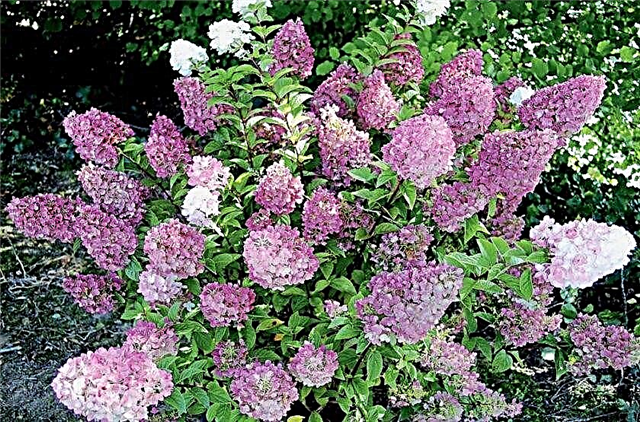
- The smallest can be called a variety Baby lays, whose height rarely reaches even 1 m, and a width of no more than 75 cm. The bush is erect, abundantly blooms with small cream-colored flowers.

How to choose a grade
The conditions for the growth of many varieties of hydrangeas are very similar. Therefore, the choice for the most part depends on aesthetic preferences. There are many varieties and picking up something to your taste will not be difficult.
Important! Good winter hardiness applies only to adult plants. If in winter the cold can reach up to -18 ° С, then it is better to cover bushes up to 2-3 years old with a cloth or make a protective frame.
For example, lovers of large hydrangeas should pay attention to the Levan variety, which grows up to 3 m in height. As for winter hardiness, all new varieties have no problems with it, and for some old ones simple mulching will suffice.
Basic rules for growing hydrangea
In total, several most important points can be distinguished when growing hydrangea:
- The plant is very hygrophilous. Optimum if the soil is always a little wet.
- The best soils are acidic. In no case should not be planted on calcareous soil. In total, it is better to apply acid fertilizers from 2 to 4 times per season.
- The suitable width for the seedling is 50–70 cm, and the depth is 35–40 cm. It all depends on the roots.
- If the shoots are very brittle and brittle, then they need to be fertilized with a strengthening solution of potassium permanganate.
- The best planting time in the northern region is spring, and in the southern - spring – autumn.
- At the beginning of each season, last year's shoots need to be shortened, leaving 2-3 pairs of buds. Without pruning, the bush will not be as lush as it can be. You also need to cut off all branches that have died or are frozen after the winter season.
 Hydrangea has for many years been one of the most popular types of bushes.
Hydrangea has for many years been one of the most popular types of bushes.
Important! Many varieties of hydrangeas are distinguished by fragile branches. So that strong winds do not cripple the bush, it is advisable to plant it behind a fence or other elevation that will protect it.
Breeders do not stop experimenting, introducing more and more new varieties. And gardeners can only choose the most suitable form for their garden.














